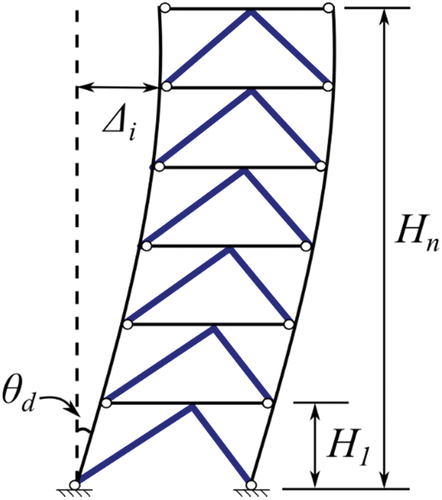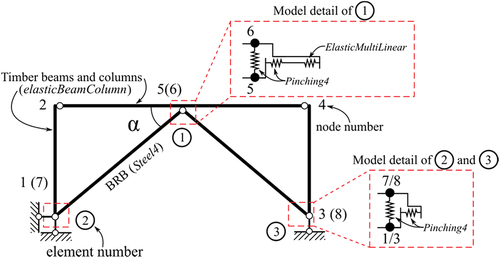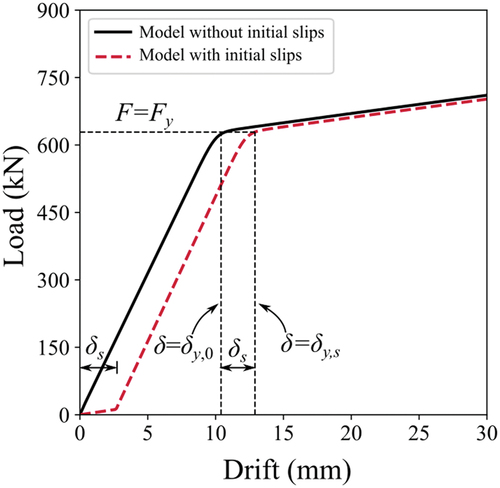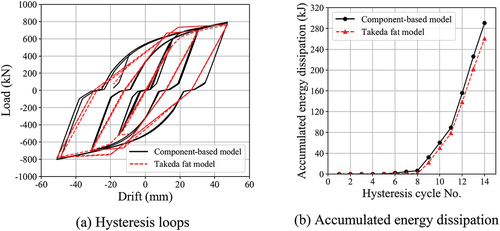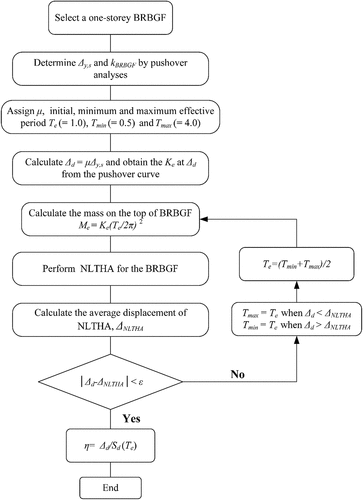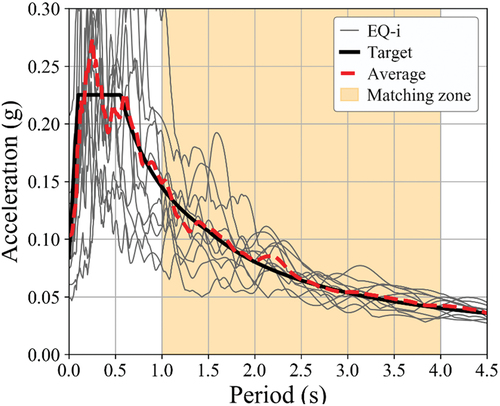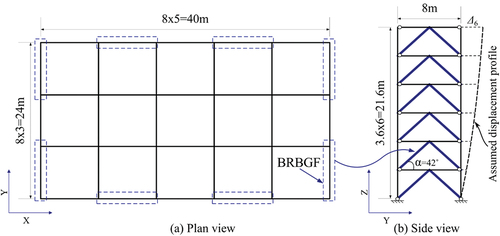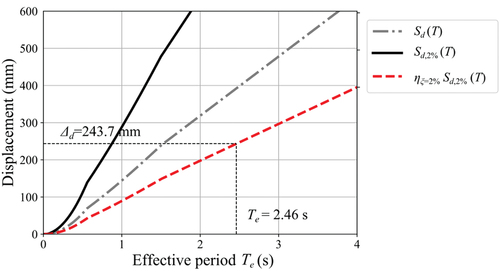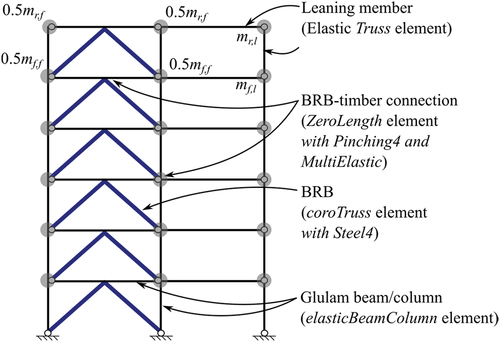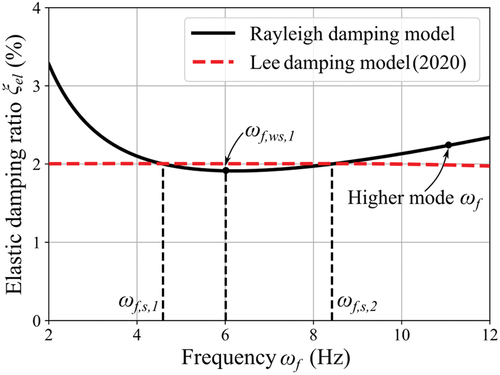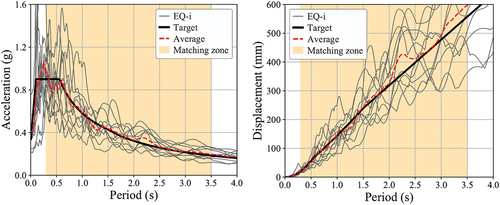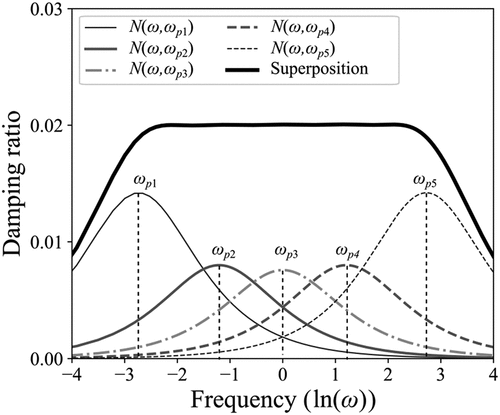Figures & data
Figure 1. BRBGF specimen with the dowelled connections (Dong et al. Citation2020b).
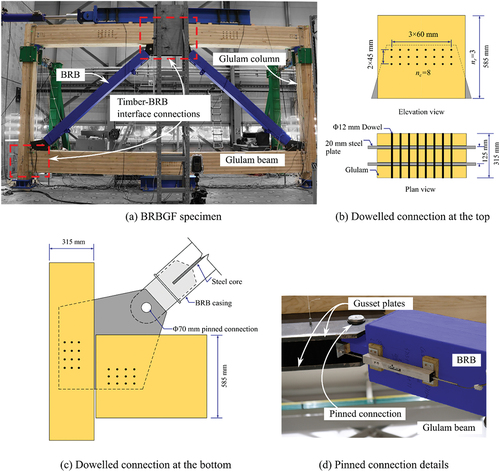
Figure 2. Comparison of BRBGF hysteresis curves (Dong et al. Citation2021).
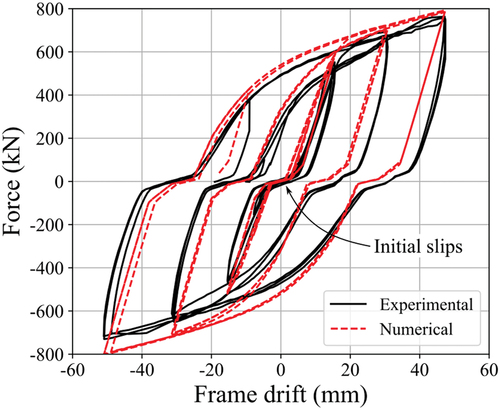
Figure 3. DDBD design approach (Priestley, Calvi, and Kowalsky Citation2007).
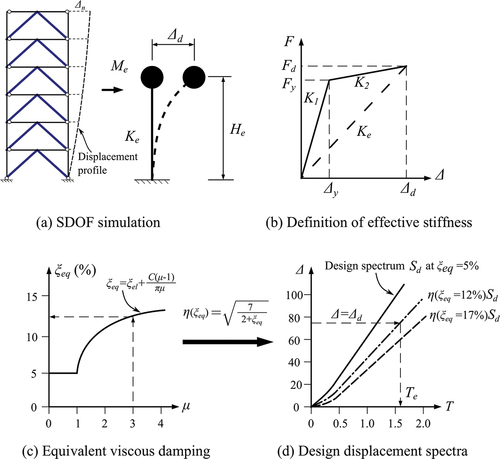
Figure 7. Yield drift components (a) the inter-storey drift contribution of the BRB deformation δy,i,BRB; (b) the inter-storey drift contribution of the column axial deformation δy,i,col.

Figure 10. Takeda fat model (Priestley, Calvi, and Kowalsky Citation2007).
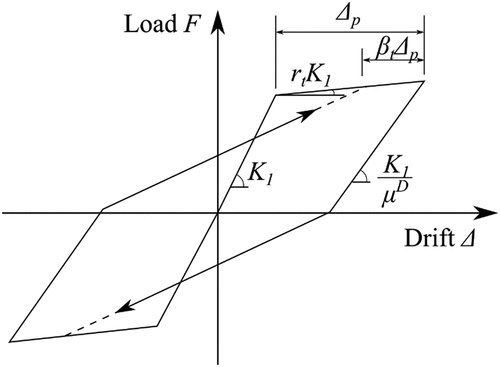
Table 1. Parameters of one-storey BRBGF models.
Table 2. Results of stiffness adjustment factor λ.
Table 3. Ground motion records and scale factors for NLTHA.
Table 4. Loading information of case study buildings.
Table 5. Design parameters of BRBGF-6.
Table 6. DDBD information of case study buildings.
Table 7. Member size information of BRBGF-3.
Table 8. Member size information of BRBGF-6.
Table 9. Member size information of BRBGF-9.
Figure 19. Maximum displacement profile and inter-storey drift ratio response. (a) BRBGF-3. (b) BRBGF-3. (c) BRBGF-6. (d) BRBGF-6. (e) BRBGF-9. (f) BRBGF-9.
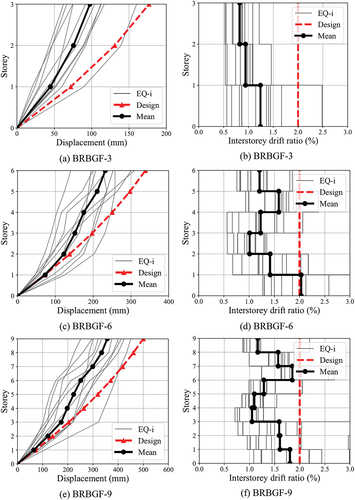
Table 10. Combined strength factors of glulam members.

